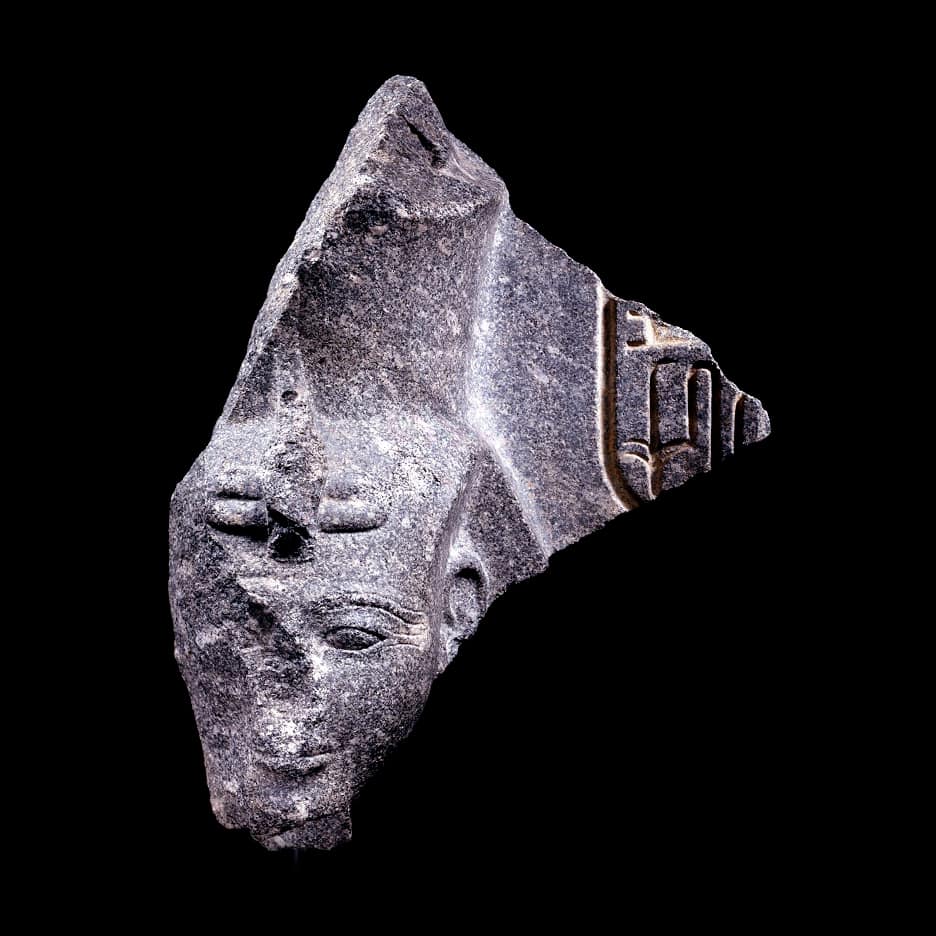
A 3,400 year-old bust of the 19th Dynasty pharaoh King Ramses II has been returned to Egypt after being stolen and smuggled out of the country more than 30 years ago. The bust is being held at Cairo’s National Museum of Egyptian Civilization and is due to be professionally restored. It has not yet been announced whether or when it will go on public display for visitors.
Exterior and facade of the Egyptian Museum in Cairo’s landmark Tahrir Square. Photo: Khaled Desouki/AFP via Getty Images.
The stone bust is believed to have been stolen in the late 1980s or early 1990s, and was spotted in 2013 in an exhibition in London. The sculpture was available for sale at the exhibition, and the Egyptian antiquities ministry maintains that it moved through several countries before being found again in Switzerland and confiscated as part of “criminal proceedings.” In Switzerland, Egypt established official ownership of the bust and the Swiss Federal Office of Culture handed the sculpture over to the Egyptian embassy in Bern last July.
Shaaban Abdel Gawad, the head of Egypt’s antiquities reparation department, said that the bust is “part of a group of statues depicting King Ramses II seated alongside a number of Egyptian deities.” The bust was reportedly stolen from the Temple of Seti I in Abydos—one of Egypt’s oldest cities—which was built in the 13th century B.C.E. by Pharaoh Seti I, the father of Ramses II.
Temple of Seti. Photo: DeAgostini/Getty Images.
Ramses II, also known as Ramses the Great, became Pharaoh at the age of 25, and ruled from 1279 to 1213 B.C.E. He was celebrated for his prowess as a military leader and for the major building projects he undertook during his reign, rebuilding several preexisting temples, including the Ramesseum and Abu Simbel temple complexes, and creating a new capital city for Egypt called Pi-Ramesses, which was later abandoned in 1060 B.C.E.
The Egyptian Ministry for Tourism and Antiquities put out a statement on April 22, saying that the return of the piece to Egypt was through the “joint cooperation” of Egypt and Switzerland “in the field of combating illicit trafficking.” Muhammad Ismail Klahed, the Secretary General of Egypt’s Supreme Council of Antiquities, said that the artifact was recovered after “tireless efforts” by the Ministry of Tourism and Antiquities.
This development comes at a time when many major European and American institutions are being called upon to return ancient artifacts from other nations. An Instagram post from the British Museum last August of their Egyptian sculpture gallery, for example, is littered with comments demanding the return of the sculptures. And investigations into the involvement of criminal gangs in the trafficking of ancient artifacts are once again making international headlines.